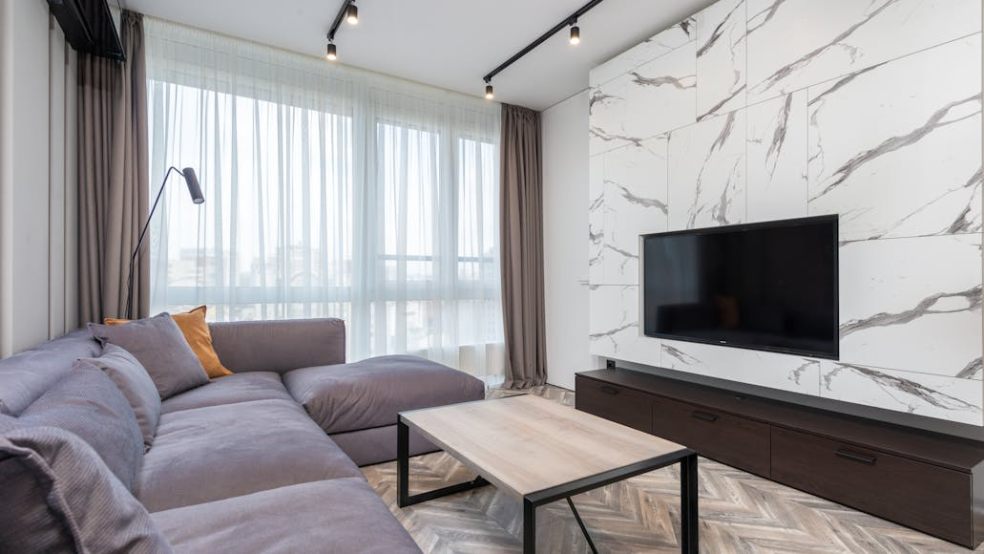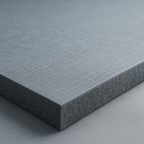
How Different Floor Patterns Change Room Atmosphere
The way you arrange your flooring can completely transform how a room feels. Beyond just colour and material, the pattern you choose creates a distinctive atmosphere that reflects your personal style. From classic straight layouts to more adventurous designs like herringbone LVT flooring, each pattern brings its own character to your space.
Different floor patterns serve various practical purposes too. Some can make rooms wider, while others draw the eye to focal points or create visual separation between areas in open-plan living spaces. The right pattern might even influence how people move through a room, subtly directing foot traffic or creating a natural pathway.
Luxury vinyl tile flooring has made experimenting with floor patterns easier and more cost-effective than traditional alternatives. LVT’s click installation system eliminates complicated adhesives and reduces labour needs, with many homeowners managing the process independently after simple preparation. This practicality brings signature looks such as herringbone into reach for far more households—traditional hardwood herringbone installations not only take longer but also involve higher fitting costs and specialist skills.
The expanded selection of finishes and pattern-ready designs, combined with straightforward installation and lower material expenses, accounts for LVT’s rising popularity among renovators seeking accessible style.
The Psychology Behind Floor Patterns
Floor patterns change how rooms feel without changing anything else. When you choose designs like parquet or lattice in patterned LVT flooring, the extra depth and texture can make a space seem either larger or more inviting. This happens because your brain reads floor lines and shapes as spatial signals, affecting your perception of size and comfort.
Linear patterns steer your gaze—if planks run from the doorway inward, the room feels deeper; if they stretch sideways, the space feels wider. Subtle shifts in pattern can help guide movement, making paths easier to follow in open layouts.
Designers often use geometric patterns to bring energy and focus, especially in modern spaces. A sharp chevron or herringbone arrangement pulls attention and makes rooms appear livelier, while softer curves or flowing mosaics bring calm by smoothing hard lines. Symmetrical designs like basket weave offer predictability and order, which helps people relax in bedrooms or home offices.
This effect is explained by Gestalt psychology, where regular patterns make spaces feel settled and organised. Cultural influences play a part, too. Parquet recalls elegant French interiors and hints at luxury, while checkerboard layouts feel both traditional and stable, referencing early British or American homes. Choosing certain patterns can help tie a space to its roots or update it with a modern twist.
Vertical vs. Horizontal Layouts
The placement of planks directly influences how your space feels. Vertical layouts—where boards run from the doorway toward the far wall—pull the eye deeper into the room, subtly extending its length. This visual trick is especially useful in narrow hallways or small bedrooms, where elongating the sightlines helps open up cramped spaces. To really achieve this effect, ensure the planks start square with the entrance; inconsistent rows or broken lines can interrupt the flow, causing the room to feel shorter.
For tight spaces prone to heavy use, products with advanced wear layers or added durability, like some LVT collections, protect the surface and keep the look crisp over time.
Horizontal plank orientation, on the other hand, makes walls appear farther apart. When planks run side to side, the eye follows their width, giving living rooms or small bathrooms a sense of added space. This layout can also balance awkward proportions if a room feels overly long.
When installing horizontally, align planks carefully with the longest unbroken wall for a unifying effect. Transitioning direction at room thresholds, such as switching the plank layout for an adjoining space, helps define each area while supporting a seamless flow in open-plan homes. Always check for proper subfloor prep and consistent edge alignment to prevent visible gaps and shifting underfoot.
Classic Flooring Patterns That Change Spaces
Traditional floor patterns hold their appeal thanks to centuries of successful use and the way they set the tone in any space. The straight-lay pattern is simple to install and provides a neutral backdrop that lets bold furnishings or wall colours shine without visual distraction. This approach is favoured for its ease and ability to create harmony in both compact and open-plan spaces.
Basket weave dates to ancient architecture but still suits modern homes. It introduces subtle texture using interlocked sets, making small rooms appear more layered. Choosing a two-tone basket weave adds extra depth. With LVT, these blends are easier to achieve, and durable finishes hold up well in busy areas.
Strip flooring, often seen in heritage interiors, uses long, staggered planks to build a sense of continuity and resist everyday scuffs. This pattern now adapts easily to LVT, giving the look of real wood without high upkeep.
Classic designs stay relevant because they blend with contemporary or traditional furniture, making updates easy when trends change. Installing timeless layouts with lighter-toned LVT opens up dark rooms and gives a modern twist. For low-maintenance refreshes, these proven patterns help minimise renovation risk and keep coordination simple as new styles emerge.
The distinct pattern of herringbone LVT flooring directs movement and adds energy, working especially well in entryways or hallways. Consistent LVT sizing means a professional look is achievable for DIY installers, helping homeowners get statement floors without specialised skills.
Scale changes how patterns influence a space. Smaller herringbone or parquet suit tight rooms for detail, while large formats command attention in spacious living areas. Checkerboard arrangements, made easy with interlocking LVT tiles, instantly introduce drama in kitchens or foyers, and allow colour flexibility to match contemporary palettes.
Parquet and chevron styles, with roots in classic mansions, bring geometric order and visual interest. Choosing a scale and colour that fits the room ensures these patterns complement, rather than overwhelm. For busy households, resilient finishes on patterned LVT help maintain appearance even in high-traffic zones.
Practical Floor Pattern Applications Room by Room
Each room's function shapes the best floor pattern choice. In busy areas like hallways and kitchens, running planks in the direction of foot traffic reduces visible scuffs and helps keep edges free of debris, making routine cleaning more efficient. Using linear layouts minimises seams, so dirt and spills have fewer places to hide. For example, installing planks lengthwise from the kitchen entrance and extending them to the far wall makes it simple to sweep crumbs toward the exit and lessens the impact of constant use.
Dining rooms gain definition from patterns that frame the space or highlight the centre, helping set clear boundaries for tables and chairs. Adding a subtle border or centralised design draws attention to the main gathering area. In bedrooms, calmer, less busy layouts support relaxation and contribute to good sleep quality, while a bathroom can handle a bold tile motif, adding a sense of playfulness to tight quarters.
Light strongly influences pattern effects. Bright, south-facing rooms can support detailed patterns, as ample sunlight prevents the space from feeling crowded. Rooms with limited natural light benefit from light-reflective finishes and simple designs, which help maximise brightness and create a more open feel. In the evening, lamp shadows bring out pattern textures, while ceiling lights soften contrasts.
Complex floor patterns can help hide small debris, but they might take longer to clean due to more seams. Large-format patterns require less care but will reveal dirt sooner. Weighing maintenance needs against design is key for homes with lots of activity.
Open-plan layouts use changes in pattern direction or style to visually divide zones, like switching from a linear kitchen grid to a distinct dining layout. Consistent flooring materials with different layouts keep the space unified. Additionally, using border details or a contrasting strip can mark off sections for seating or entryways, guiding movement and furniture placement while maintaining an open feel.
Small Space Solutions: Pattern Tricks
Diagonal LVT patterns visually expand tight rooms by guiding your gaze from corner to corner, breaking up boxy boundaries and introducing a sense of movement. For best effect, measure from the room’s centre and use a chalk line to set your main axis—this keeps every row at a consistent 45-degree angle, which prevents distracting misalignments later. Overlooking this step often results in gaps or edges that run off course, so always double-check reference lines before you begin.
In places like compact bedrooms or bathrooms, a diagonal layout shifts focus, creating a room that looks and feels more open. If you want the benefits of increased depth but prefer a gentler approach, start with a slight offset from the wall instead of a full diagonal. This technique adds subtle flow without overpowering small spaces. LVT’s click-fit design simplifies these installations, letting you make bold pattern choices or test creative offsets without complex tools, so even first-time fitters can achieve a precise finish that maximises the effect in confined areas.













